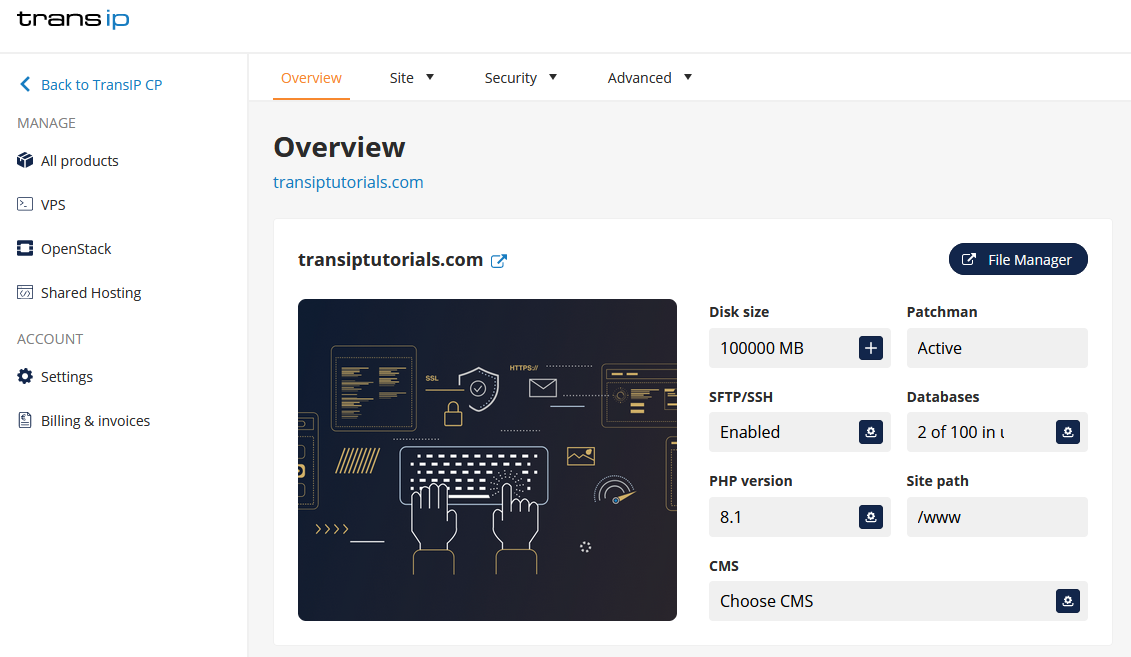An error log indicates in most cases why you see an error (such as a 500 or 403 error) on your website. Consulting your error log can make it easier to search for a solution. In this article we show you how to open this log file on your web hosting package.
Open the error.log file using the File Manager
To view your error log, log in to the control panel and click 'Shared Hosting' in the menu. Next, select your domain below 'Products'.

Next, click on the 'File Manager' button in the top right of the overview page.

Open the 'Logs' folder and look for the 'error.log' file. The name of your error log may be slightly different, but it will always start with ‘error’ and end in ‘.log’. Download it and open it using notepad++ or a similar program.
Here, you will find the error messages of your website. The description can be a bit technical but errors usually point to a specific line in a file.
In the example below the error is in the Twenty Twenty-Four theme, specifically on line 147 of functions.php:

The solution for this is to simply rename or remove the corresponding folder that contains the plugin or theme. You can then reinstall the plugin or theme to solve the issue. In these cases you can use the File Manager in your control panel.
Navigate to the 'www' > 'wp-content' > 'plugins' or 'themes' folder and search for the plugin or theme that is causing trouble. Rename or remove the plugin and you will be able to log in to your WordPress Dashbaord once more. Now reinstall the plugin / theme or search for an alternative plugin / theme to use.
You may not immediately see an errorlog file. This means that there have been no errors on the current day. Older logs are zipped and numbered, such as error.log.1.gz. You can extract it by clicking on it and clicking 'Extract'. You can then download the extracted file.
Open the error.log file using SSH
Connect using SSH and enter the following commands to naviate to the logs folder and open a list of the files in the folder:
cd logs
lsThis allows you to check whether the error.log file is present. If not, then your most recent error log is zipped (such files end in .gz). You can extract them by using the following command:
gzip -d error.log.1.gzTo read the last 10 lines of a file, use the tail command followed by the name of the file.
tail error.log
Or read the file in full:
cat error.log



